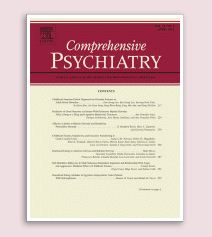New Study Supports Subtypes of 'Sensory Modulation Disorder'
[Source: Comprehensive Psychiatry via The SPD Foundation]

James, K. Miller, L.J., Schaaf, R, Nielsen, D. M. & Schoen, S. A. (2011). Phenotypes within sensory modulation dysfunction. Comprehensive Psychiatry, 52, 715-724.
This study partially supports the new taxonomy proposed by Miller and colleagues (2007). Two of the three Sensory Processing Disorder subtypes were identified in a sample of 94 children. These children were clinically diagnosed by occupational therapists as having Sensory Modulation Disorder (SMD).
- Sensory Seeking/Craving (SC) which was characterized by the following:
- Hyperactivity, impulsivity, delinquent and/or aggressive behaviors, poor socialization, inability to adapt, and impaired cognitive and/or social behavior.
- Sensory Under-Responsivity (SUR) which was characterized by:
- Movement sensitivity, emotional withdrawal, low energy and/or weak muscles, fatigue, poor balance and motor control. These behaviors may occur because children with SUR tend to avoid activities that challenge their balance and motor coordination.
Although Sensory Over-Responsivity (SOR), which is characterized with adverse responses to touch, visual, taste, sound, and smell stimuli, did not cluster as a separate subtype, it was present in both Sensory Craving and Sensory Under-Responsivity.
The results of this study are different from previous hypotheses about the relationship between Sensory Under-Responsivity and Sensory Craving as well as the relationship between Sensory Under-Responsivity and Sensory Over-Responsivity. Unlike Winnie Dunn’s model, the individuals in this study with Sensory Craving did not have Under-Responsivity in the proprioceptive and vestibular domains. In addition, this study did not find that Sensory Under-Responsivity and Sensory Over-Responsivity were on a continuum as suggested in other writings. Rather, Sensory Under-Responsivity and Movement Over-Responsivity co-occurred in this sample.
Additionally, a high percentage of our sample displayed behaviors characteristic of ADHD and similarly a high percentage of children who met criteria for ADHD were reported to have SMD. Specifically, 75% of the children with SMD had significant sensory craving and hyperactivity while 82% or the children with ADHD had sensory modulation difficulties. Therefore, therapists and parents are advised to evaluate children for both SMD and ADHD in order to obtain the appropriate and effective interventions. For example, children with SMD tend to become calmer with sensory activities, while children with ADHD may become more hyperactive and disorganized with the same activities.
This research supports the finding that children with ADHD are a heterogeneous group and may present with multiple characteristics of SMD. For example, children with ADHD often have features of sensory craving as well as sensory over-responsivity. Given the likelihood of overlapping symptoms occurring in these disorders, it is important for clinicians to have tools to better differentiate them. In the future, we hope to have measures of direct performance to better differentiate clinical disorders from sensory modulation subtypes.
PediaStaff is Hiring!
All JobsPediaStaff hires pediatric and school-based professionals nationwide for contract assignments of 2 to 12 months. We also help clinics, hospitals, schools, and home health agencies to find and hire these professionals directly. We work with Speech-Language Pathologists, Occupational and Physical Therapists, School Psychologists, and others in pediatric therapy and education.
